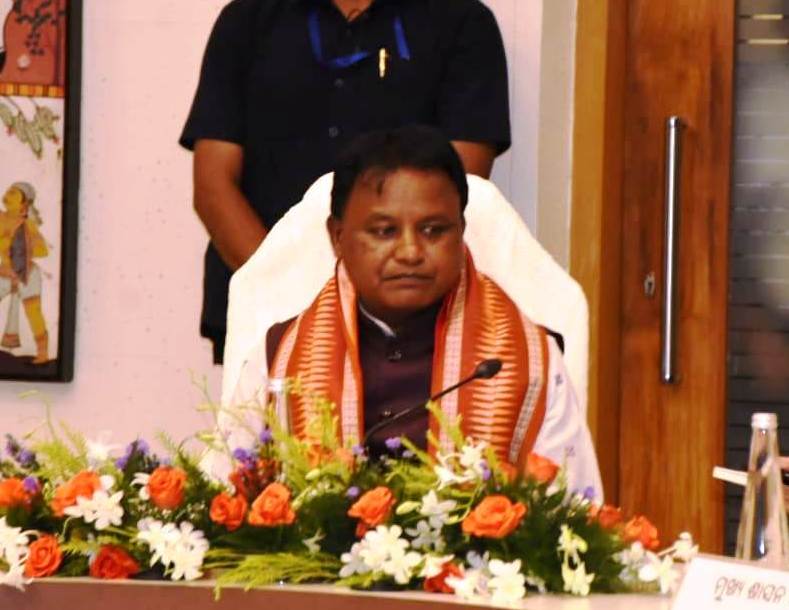Bhubaneswar: A tribal leader from the Santali community, Mohan Majhi, has had a remarkable political journey from being the sarpanch of a gram panchayat in the backward, tribal-dominated Keonjhar district to becoming the first BJP Chief Minister of Odisha.
However, he faces numerous challenges, including strong opposition from both the Biju Janata Dal and Congress, as he takes the helm of the state’s administration.
A law graduate and an RSS member during his student days, Majhi started his political career as a sarpanch, serving a full term from 1992 to 1997.
Later, he worked as a teacher at Saraswati Sishu Vidya Mandir in Jhumpura until 2000, when he was picked by the Bharatiya Janata Party (BJP) as its candidate from the Keonjhar (ST) seat. The party was in alliance with the BJD during that election.
Since then, he has not looked back, retaining the seat in the 2004 elections. Although he was defeated in the subsequent elections in 2009 and 2014, he continued to nurture his constituency, which helped him return to the state assembly in both the 2019 and 2024 elections.
Majhi served as the Opposition Deputy Chief Whip in the Assembly from 2005 to 2009 and became the Opposition Chief Whip from 2019 to 2024. During this time, he played a key role in raising several issues that embarrassed the BJD government headed by Chief Minister Naveen Patnaik.
Majhi will be the third tribal chief minister after Hemananda Biswal and Giridhar Gomango from Congress, who both served the state for brief periods when the Congress High Command nominated them to replace Chief Minister JB Patnaik, who was asked to step down twice, once in 1989 and again in 1999.
Political observers note that Majhi faces a major challenge as chief minister from the biggest opposition party, the BJD, which has a strength of 51 members in the house, as well as the 14-member Congress party and a lone CPM member in the Assembly.
Since 2000, the BJD, which held a brute majority in the Assembly and remained in power for five consecutive terms until 2024, had never faced such a strong opposition.
In 2000 and 2004, the BJD and BJP alliance government in the state faced an Opposition Congress which had a strength of 26 and 38 members respectively in the 147-member house.
From 2009 to 2024, the ruling BJD faced opposition from the BJP and Congress, which had a combined strength of fewer than 33 members.
However, in the 2024-2029 period, Majhi will certainly face the biggest challenge from the 51 members of the BJD, the party that was in power for a long 24 years, and the 14-member Congress party, as well as the lone CPM member in the Assembly.
He will have to manage the state administration and fulfil the promises made in their political manifesto during the election campaign.
The BJP promised to make Odisha the number one state in the country, a guarantee from PM Modi. The party also promised to launch the Subhadra Yojana, in which every woman would receive a cash voucher of Rs. 50,000, which could be encashed over two years, creating 25 lakhpati didis in the state.
Other promises include an MSP for paddy at Rs 3,100 per quintal, filling up 1.5 lakh vacant government posts, and introducing the Ayushman Bharat scheme instead of the Biju Swasthya Kalyan Yojana (BSKY) launched by the previous BJD government.
The BJP vowed to open all four gates of the Sri Jagannath temple for devotees and make the probe commission report public on the missing keys of the Ratna Bhandar of Sri Jagannath temple while protecting the Odia pride, culture and heritage.
UNI
